
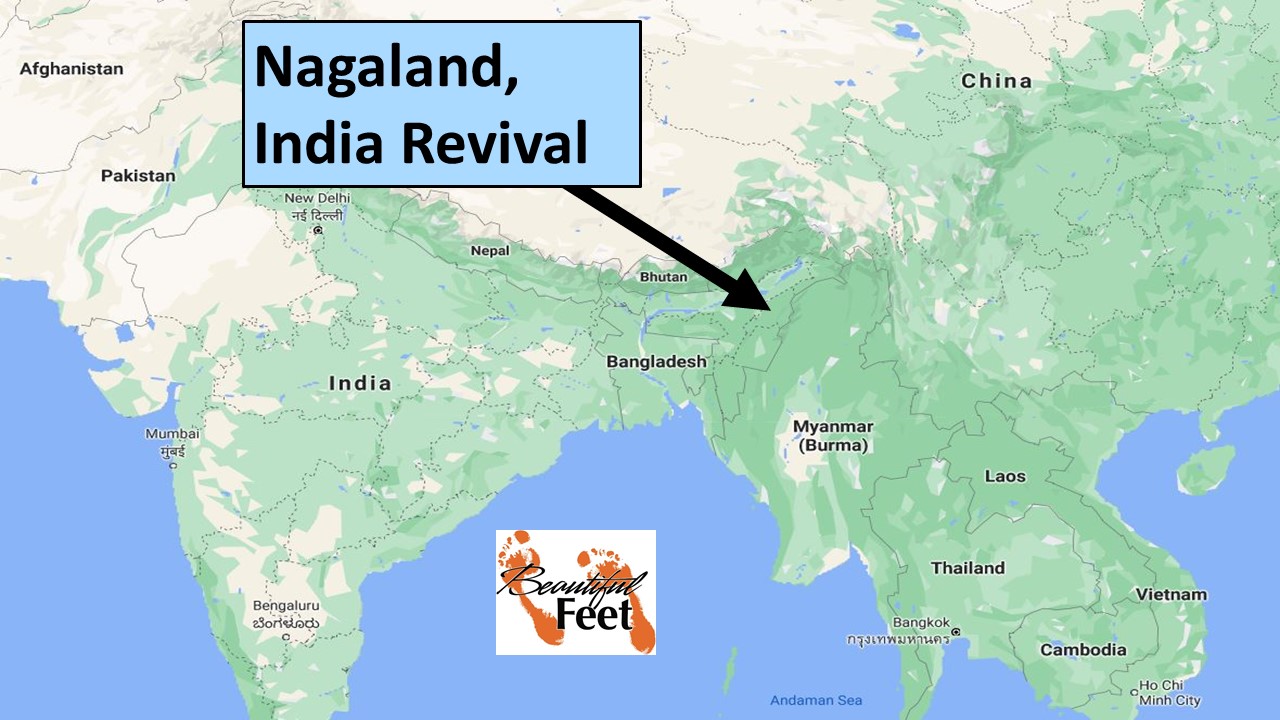
This revival came in two phases. The first was in 1952, then again in 1976.
Introduction—Who are the Nagas?
The Nagas live primarily in Nagaland, a northeastern state of the nation of India. They are made up of 13 tribes (some say 20-40 ethnic groups), all having a different language and customs.
With head-hunting having been part of the Naga culture, the tribes lived in constant fear of one another, as raids would commonly take place for men to demonstrate their bravery and courage by bringing back a head as a trophy. These heads were hung on display on sacred trees, with some men even displaying them in their homes. One man was reported as having 62 of them. Head-hunting continued among the Nagas until around 1970. When Christianity began to dominate the Naga countryside this barbaric practice came to an end.
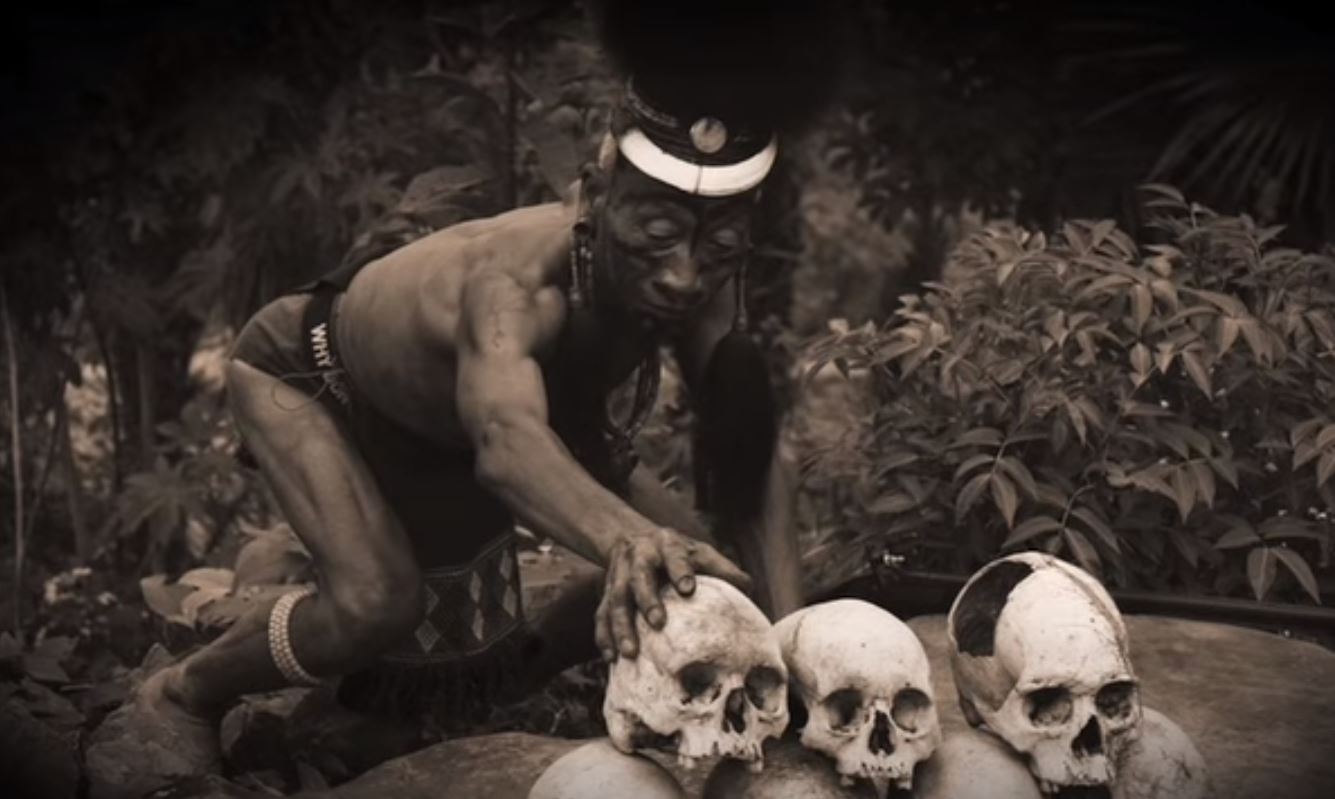
Naga man stacking skulls. Until 1970, head-hunting was part of the Naga culture
Christianity in Nagaland
Missionaries entered the Naga hills in the 1840s. There were very few converts at this time. It wasn’t until the 1870s that a significant number of Nagas began to place their faith in Christ.
Fires of Testing
During WWII, major battles took place in Nagaland, with the Nagas fighting alongside the British and the Army of India, against the Japanese. Following the war, the Nagas made an appeal for independence, first from the British, and then from India, but these requests fell on deaf ears.
The Indian government, becoming offended by the Nagas, sent in their army (1955-1960 Ethnic Conflict) to bring the Nagas quest for independence into subjection, and in so doing, committed unspeakable and horrific atrocities against the Nagas; rape, pillage, torture, and massacre. During all these atrocities, the United Nations, and the entire world, looked the other way.
These massacres led to the death of at least 200,000 Nagas during the 1950s, but the fires of testing set the stage for one of the most powerful revivals in the Naga Church’s history.
Extraordinary Prayer
With all the missionaries having been expelled from Nagaland in the 1950s, and, in the midst of the Naga’s fiery trial, not knowing what else to do, they began to seek God for His help – with some prayer meetings lasting as long as five hours.
The Naga Christians had been weeping before God with confession of sins being made. They knew they had to forgive the Indian Army for their brutal slaughter and atrocities carried out during their military assaults against them. One Naga pastor said that,
The most difficult thing we have to do is forgive.
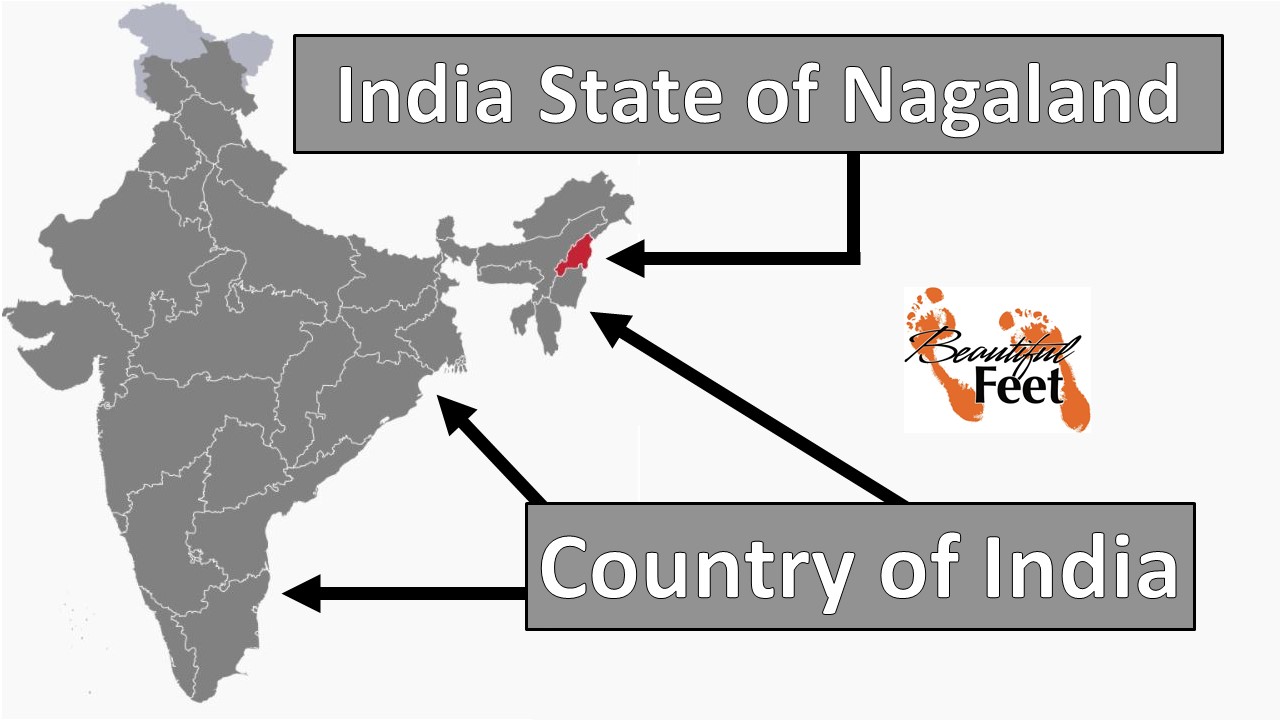
Nation of India, with Nagaland in Red (Source)
What Happened
In response to the desperate prayers of the Naga Christians, help came in the form of an awakening in 1952, under the leadership of Rev. Rikum. And this became
one of the most powerful and comprehensive revivals in Christian history.
The Naga believers then
► Arranged for more prayer meetings, as these became life forces.
► Revitalized the youth and women’s organizations.
► Planned and carried out evangelistic efforts.
As evangelists would spread out and preach in other churches, revivals would start in many locations.
In 1952, at Longkhum in Mokokchung District, while the Christians had gathered for prayer, a rainbow appeared in the sky, and this was on a sunny day. As the believers wondered how the rainbow could have formed, they heard a loud voice say,
“This revival will be spread all over Nagaland.”
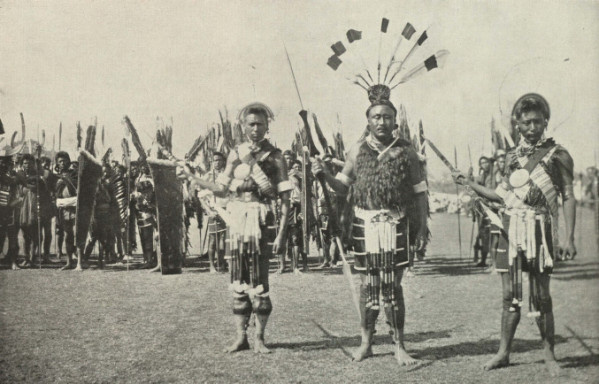
Naga Tribesmen (Courtesy of Special Collections, University of Houston Libraries)
Conviction of Sin
Like all genuine revivals, the conviction of sin was very powerful in the Naga Hills, and nigh irresistible. One pastor commenting on this power said,
The Holy Spirit revealed my sins at this meeting and with a feeling of terrible dread and shame I confessed all my sins to him. It was like a great weight was released from my back and immediately I was filled with overwhelming joy.
Very often preachers stopped their preaching in the middle of their sermon because many in the congregation would cry out for mercy. Many times people would stand up under their heavy burden of sin, and confess those sins before God and even before the congregation.
Changes Took Place
The formal church services experienced immediate change. During the revival everything became spontaneous, with rigid structures being swept away as the leadership yielded to the Holy Spirit’s guidance.
Some people received words of knowledge from the Holy Spirit, exposing people’s sins. This was coupled with Bible verses, being quoted accurately, which revealed the condition of people’s hearts. This was a common occurrence wherever the revival spread.
Gifts of the Holy Spirit
All of the gifts of the Holy Spirit, as listed in the Bible, were experienced in the Naga churches.
► Blind eyes were opened.
► Deaf and mute were healed.
► The sick were healed.
► Demon possessed were delivered.
► Visions were experienced—giving direction to the Christians in their ministries.
► Prophecies gave guidance on how to negotiate with Indian troops so they wouldn’t harm people or destroy villages.
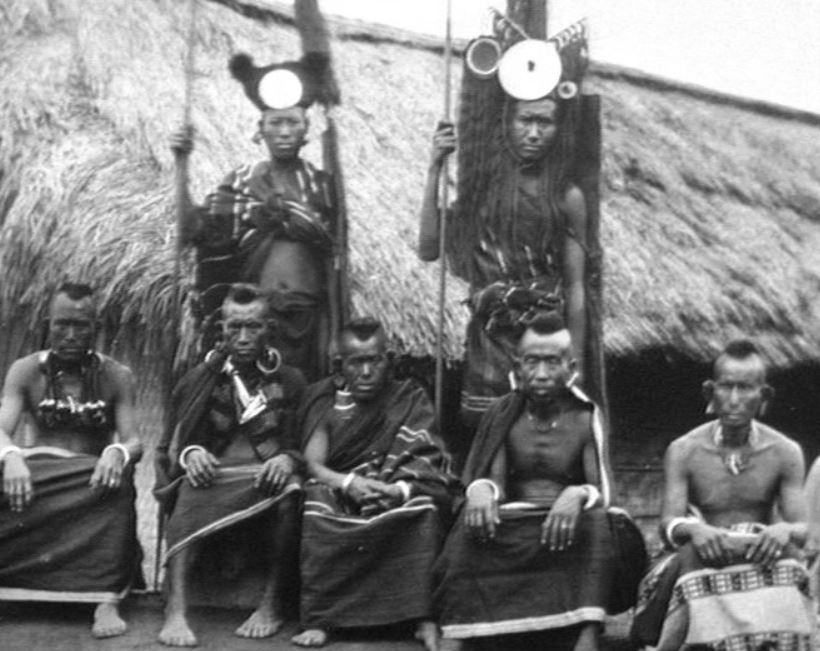
Tangkhul Nagas (c. 1873-1875) public domain
Fruit of the Spirit
Prior to the revival the Christians had grown lukewarm and worldly. After the revival started, they were on fire! As the people in the community saw the life transformation in the Christians it overwhelmed them, opening the door for evangelistic work to spread everywhere.
Miracles
Many signs and wonders occurred, which put the fear of God into all the people.
One such “wonder” took place in 1954 in the village of Phiro in Wokha District.
While the believers were gathered together praying, the church was lifted up from the ground about two to three feet. Even unbelievers saw this miracle and many repented of their sins.
► In the village of Khulazu Basa (1958 – 1959), during the height of the revival, people were so busy seeking the Lord in prayer that they had no time to plant or take care of their crops. Even without them working their fields God intervened and miraculously provided for them as their crops began to grow automatically.
► On September 22nd, 1957, in the town of Wokha, believers were gathered together for prayer and they saw fire flickering just above the roof of the church building. People from around the town came running to observe this “wonder.”
► In 1959, a regiment from the Indian Army surrounded the Sendenyu Baptist Church while it was in progress, and for several minutes they opened fire with machine guns, but none of the Christians inside were harmed. The Indians then threw in three hand grenades. The Christians immediately covered them with their hands and prayed, and none of the grenades exploded. The soldiers hurriedly withdrew, knowing that the power of God was protecting those in the church.
At this same time soldiers had indiscriminately fired their weapons into homes in the area. Four men were hit by the bullets. The bullets penetrated their clothing, leaving holes, but the bullets fell to the floor without penetrating their skin and they felt no harm.
► Similar to Acts 12:1-19, when Peter was miraculously set free from prison, a Christian who had been held captive had a dream that the other believers were praying for him. When he woke, he touched the chains that bound him and they broke off, and he was able to flee.
► Angels provided guidance multiple times.
► At least four people were raised from the dead, with there being hundreds of witnesses that testified to the reality of this occurring.
► Walking on water was reported as having happened as an evangelistic team had to cross a river during the rainy season—even though the river was 30 feet deep.
► Never having had any formal education, one man received a divine ability to immediately read the Bible fluently.
► One person who doubted that the revival was God-sent began to tremble when the presence of God was experienced, and he became mute. After a day in this condition, he went to the chalkboard at the church and wrote, asking for the people to forgive and pray for him, but after they prayed he still couldn’t speak. When he wrote his name in the church membership book, immediately his tongue was loosed and he was then able to speak.
There were so many miracles that took place that it would take many books to document them all (John 21:25).
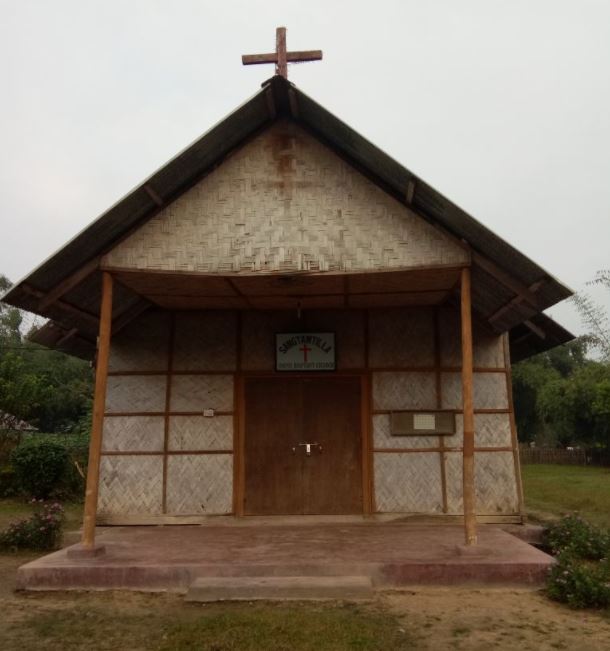
Inpui Baptist Church, Dimapur, Nagaland
Image credit: Lanhungba Bariam
Opposition
Some church leaders mocked and feared the revival. These same church leaders would excommunicate those who were involved in the revival, or who supported it in any way. Some believers involved in the revival efforts were beaten by the Christians who opposed it. Some were forced to walk through villages naked, shaming them for their participation. Others were tortured, and a few were even killed.
An evangelist visited the village of Chiechama, where dozens of Nagas were converted and baptized. The local church leaders, however, rejected these new Christians and refused to allow them to come to their church. This led the new believers to start a church of their own. After having built the new church, the Christians who opposed the revival burned it down
The traditional Baptist churches and the revivalist churches experienced a split in the late 1950s. Most in the traditional Baptist churches rejected the revival, along with the doctrine that miracles can occur in this age, even though countless miracles were taking place around them all the time.
In 1961 the Nagaland Christian Revival Church denomination was formed and thousands flocked to those churches.
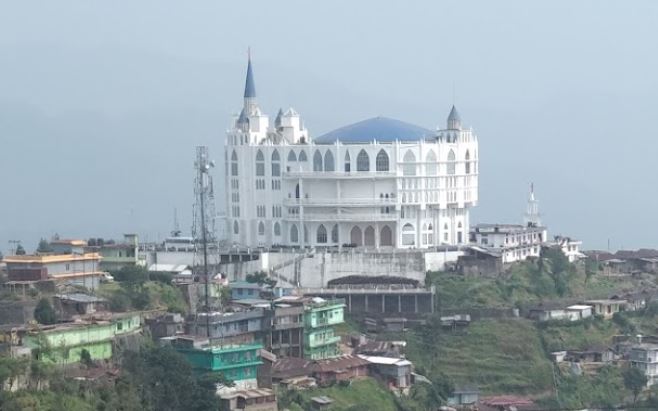
8,500 seat Sumi Baptist Church in the town of Zunheboto, Nagaland
Judgment of God
Some of the church leaders that opposed the revival died suddenly, and others became paralyzed or were struck down with incurable sicknesses. Others among them eventually humbled themselves, confessed their sins, and repented.
Two Waves of the Revival
The first wave of the revival occurred in the 1950s. The second wave occurred in 1976. This second wave began with an organized “spiritual awakening week” that took place from September 13-19, 1976. At 8:00 p.m. on the sixth day of that week, a powerful visitation of the Holy Spirit occurred.
► Many people fell prostrate under the power of the Holy Spirit.
► There was an endless stream of people confessing their sins.
► There was continual prayer taking place.
This atmosphere of prayer continued till 6:00 a.m. on Sunday, September 19, 1976. Following this, people began attending the church every night for prayer, then opposition arose from church leaders who said that what was occurring was contrary to Baptist doctrine, so they locked the doors, forbidding the revival to continue in that particular church. Even with such opposition, the revival continued to spread from tribe to tribe throughout Nagaland.
Nagas are around 90% Christian today!
These graphs show the rapid church growth that occurred in 13 different Naga tribes.







Sources
► Christianity Before the Name “Jesus” in Nagaland by Nagaland Post
► Christianity in Nagaland by Sashila Jamir
► Christianity in Nagaland by Wikipedia
► Coming Of Christianity in the Naga Area of North East India By Ksh. Rajesh Singh
► Evangelical Awakenings in Southern Asia by J. Edwin Orr
► From Head-Hunters to Church Planters by Paul Hattaway
► Imprints of Christianity in Nagaland by Asangba Tzudir
► In Christian Nagaland, Indigenous Religions by Kallol Dey
► Miles Bronson by Wikipedia
► Nagaland by Britannica
► Nagaland by Wikipedia
► Nagaland: Celebrating a 100 Years of Christian Faith by Tom Paulu
► Nagaland Revival by sermon index.net
► The Nagaland Missionary Movement by John Humtsoe
Video
From Headhunting to Christ – Nagaland, India by Bill Newman Ministries
Revival In Nagaland: Experiencing God by Donald Lee
India: Nagaland: Centenary Celebration of Christianity by AP Archive
Why These Headhunters Converted to Christianity by National Geographic
Headhunter by BBC News
Return to List of Revival Stories
Chet & Phyllis Swearingen:
Office: (260) 920-8248
romans1015@outlook.com
Beautiful Feet
P.O. Box 915
Auburn, IN 46706

